- NEW DVD Series – Stone Setting with Bezels
- Tube Set Charm by Kim St. Jean
- Prong Basket Pendant by Kim St. Jean
- NEW DVD Series – Stone Setting with Cold Connections
- New DVD Series – Stone Setting with Wire
- NEW DVD Series: Introduction to Stone Setting by Kim St. Jean
- Featured Tool: Bracelet Bending Plier
- NEW Dvd by Eva Sherman
- Fun, Fast Fold Forming DVD Series
- Double Band Ear Cuff from Alex Simkin
See Yourself as a Creative Thinker By Karen Meador PhD
Wire Jewelry Article for September 6th, 2017
This is the first in a series of articles about creative thinking and the expression of it in jewelry making. It is my hope that if you don’t already, you will begin to See Yourself as a Creative Thinker. Also, I hope you will acknowledge that creative thinking can be improved through practice.
Throughout my research and teaching the topic of creativity has led to the following response from many: “I’m NOT creative!” This often comes from those who believe creative thinking exudes if you are artistic or musical. This is the point in my teaching when I want to play Whack a Mole and punch down all those erroneous beliefs. We know creative sales people, bankers, doctors, cooks, firemen, ranchers, etc. and this affirms that creative thinking is not just about the arts. It’s about life and the way we approach things – like making jewelry.
So, let me get off my soapbox and we’ll talk about thinking creatively. While a Google search would yield multiple definitions of creativity. I tend to use the one that’s easiest for me to understand and remember. Something is creative if it is both novel and appropriate. Initially, I was bothered by the word “appropriate”; however, I appreciate the fact that, particularly in jewelry making, a piece that is appropriate will likely be enjoyed and worn by someone.
Other definitions of creativity discuss problem-solving. You likely use this form of creative thinking many times in your jewelry work. You’re happily stringing along on a necklace and run out of a particular bead you need for your symmetrical necklace. Now what? We usually go through multiple possibilities of how to solve this problem and this exercise helps encourage creative thinking. The best solution usually comes after the consideration of many possibilities. It may be the first thing we thought to do, but exploring other options helps assure us we chose the right one for the situation. Let’s think further about this in a future article when we talk about brainstorming. What other jewelry-making problems have plagued you causing you to problem solve and think creatively?
Something that is creative for you may be more commonplace for someone else. In early childhood, we recognize an action or a product as creative if the child has never done or made it previously. It is creative for that child. I choose to believe this works for adults as well. Perhaps you have been excited to make a new piece that was “out of the box” only to see something similar on Pinterest or other social media. The worst is when a friend, perhaps a fellow jewelry maker, says “Oh, I’ve seen that before”. Keep your chin up; it WAS creative for you at the time you made it. See yourself as creative!
Some of us may be using creative thinking as we figure out how to make something when we don’t have the right tools. I call this the “instead” principle of jewelry making. I don’t have a _____, so instead, I can use a ______. For example, you don’t have the right diameter bail making pliers; instead you might use a knitting needle. If you thought of this yourself, you were thinking creatively. My friend has a bag of cylinders with her jewelry supplies. Each has a different diameter and the bag contains medicine bottles, plastic caps from non-aerosol hairspray containers, small bits of copper tubing and other things. She may have had more fun gathering these than actually using them and she was certainly thinking creatively as she solved a problem.
Preparation for creative thinking involves gaining expertise or technique in an area. Since I don’t know anything about car engines, I’m not likely to come up with a creative way to fix one. I need some basic understanding and expertise first. Although I had made jewelry for some time and thought I was pretty creative, it took me a long time to learn to think creatively about my torch enameled pieces. This was a new technique and at first, it was all I could do to just get the enamel heated on the piece of metal without dumping it on the floor. I could hardly design a creative piece at that stage. I did, however, continue to practice and quit dumping so much enamel on the floor. (Yes, I still do once in a while.) As I persevered and progressed, I began to see more creative options for my pieces.
Creative thinking often requires incubation. This occurs when you walk away from a design and think about it for a period. It’s not unusual to come up with an idea while you are in the shower or watching TV. My husband often gets his creative ideas while driving the tractor round and round the pasture. We step away from a problem and give ourselves time to go about other tasks. While an idea doesn’t always present itself, we’ve at least given creative thinking a chance. If you are like me, you may want to just use the first idea generated and finish a piece. Yet, I know that forced incubation can have good results. I know that often when I’ve taken that initial idea without further consideration, I often come back later and redo the piece. I’m trying to avoid that situation with the amber bracelet below which isn’t working out very well. I’m patiently incubating. Isn’t patience supposed to be a virtue?
In the next article, we’ll talk about some of the components of creative thinking. These include fluency, flexibility, originality, elaboration and resistance to closure. We’ll use an exercise with wire to illustrate how brainstorming can lead to creative ideas. In the meantime, use some positive self-talk and reiterate that you are creative.
Happy Wrapping!
![]()
Click to Receive Daily Tips by Email







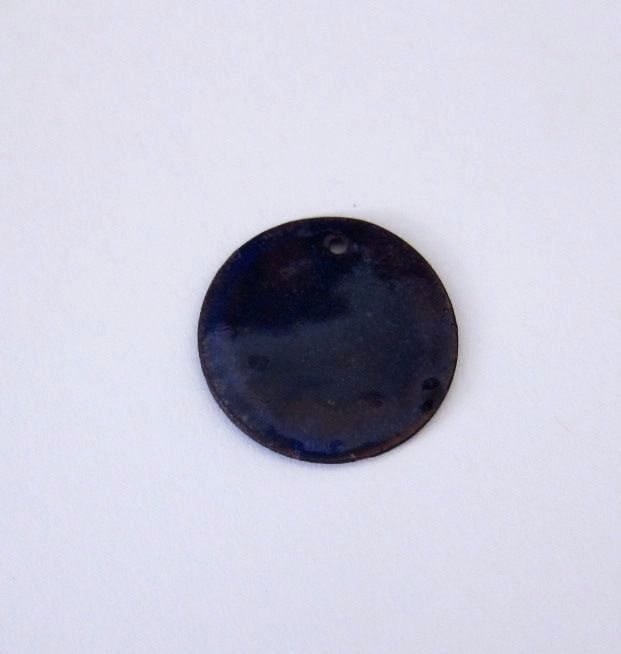
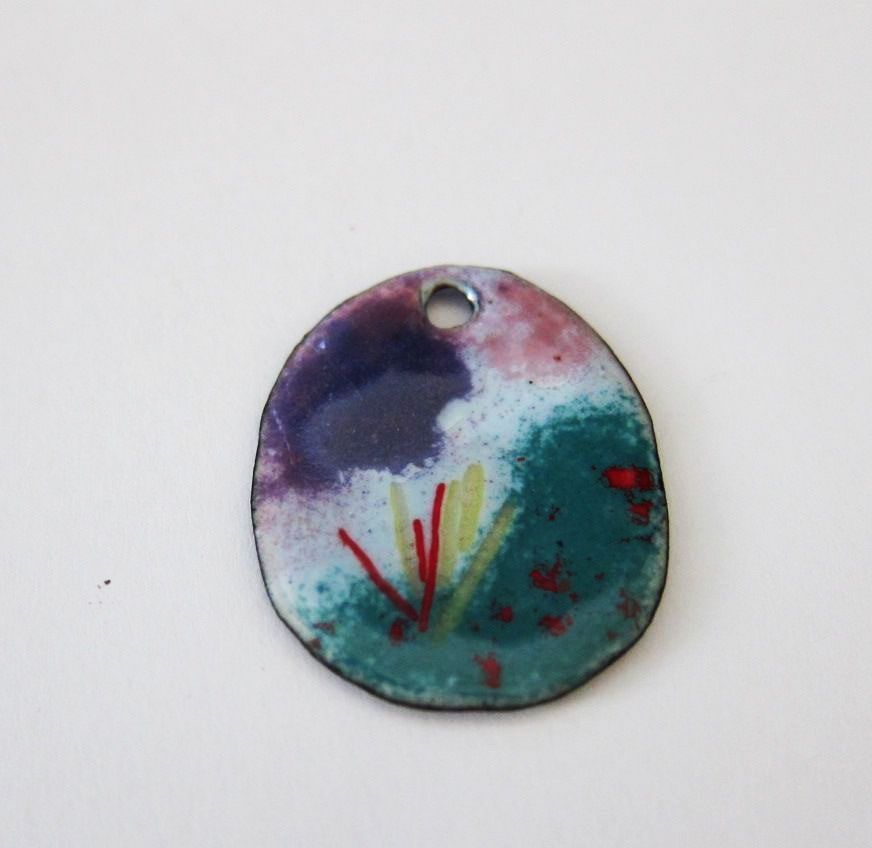

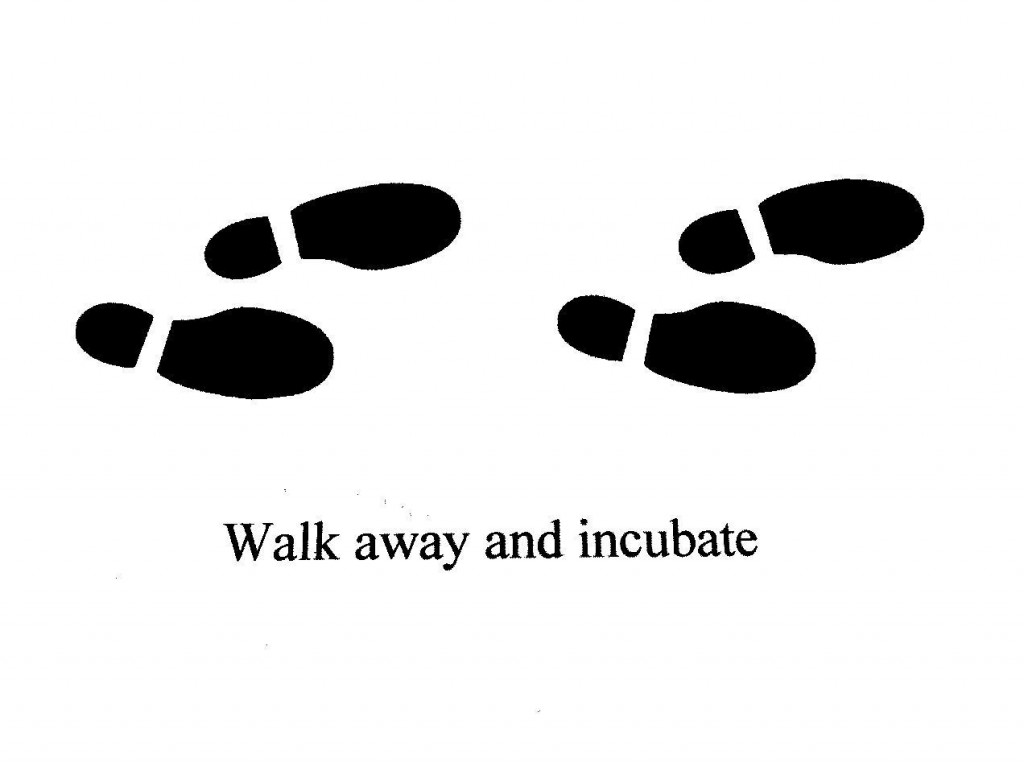

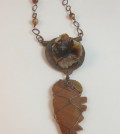




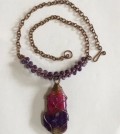


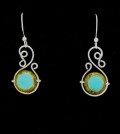




Joan Kraus
September 6, 2017 at 8:43 am
Excellent article!
Ivia
September 7, 2017 at 8:38 am
I love this article!! Cant’t wait to read the next one. Thanks so much. This will be very helpful and encouraging for me.